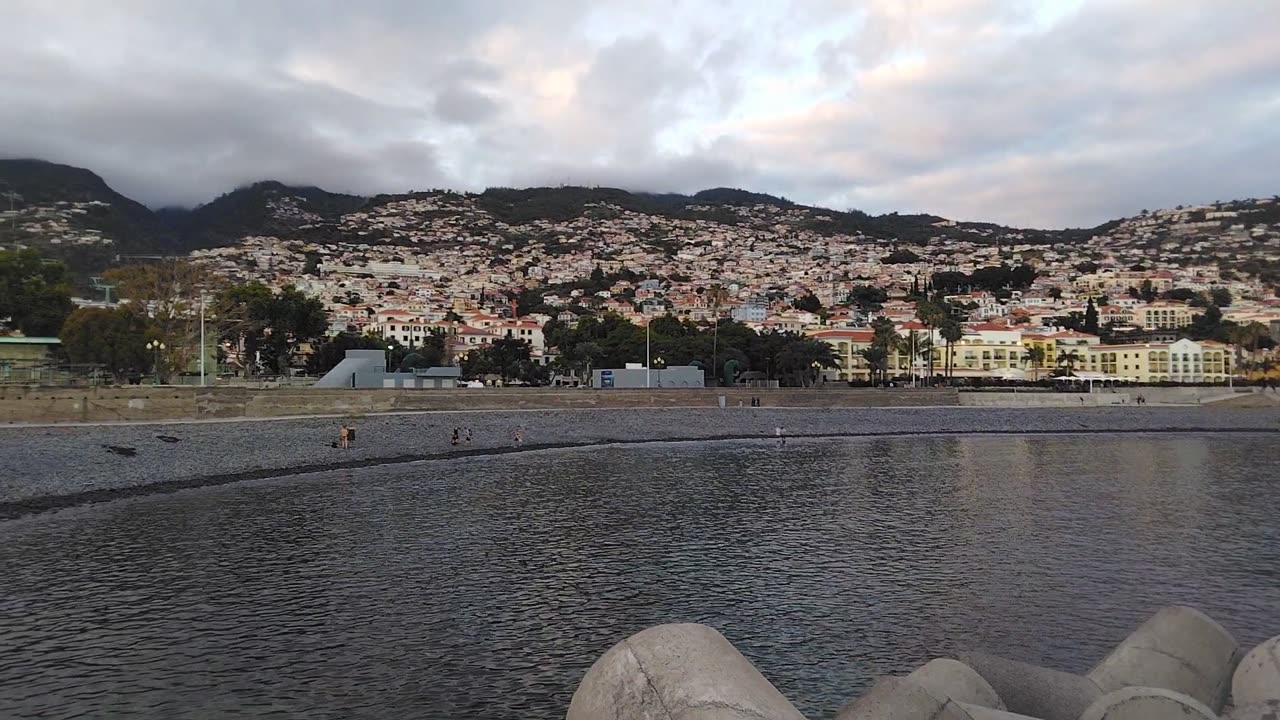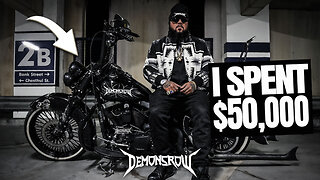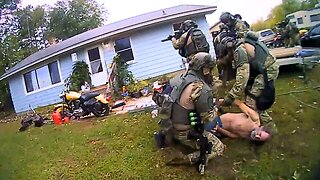Premium Only Content

Funchal, Madeira
Funchal (Portuguese pronunciation: [fũˈʃal] ⓘ), officially Funchal City (Portuguese: Cidade do Funchal), is the capital, largest city and a municipality in Portugal's Autonomous Region of Madeira, bordered by the Atlantic Ocean. The city has a population of 105,795,[1] making it the sixth largest city in Portugal. Because of its high cultural and historical value, Funchal is one of Portugal's main tourist attractions; it is also popular as a destination for New Year's Eve, and it is the leading Portuguese port on cruise liner dockings.[1]
Etymology
The first settlers named their settlement Funchal after the abundant wild fennel that grew there. The name is formed from the Portuguese word for fennel, funcho, and the suffix -al, to denote "a plantation of fennel":[2][3]
Funchal, to whom the captain gave this name, because it was founded in a beautiful forested valley, full of fennel up to the sea ...
— Gaspar Frutuoso, 16th century, As Saudades da Terra
History
See also: Timeline of Funchal
Cathedral of Funchal (Sé Catedral), constructed under the orders of D. Manuel, Duke of Beja, dating back to the 15th century
The settlement of Funchal began between 1420 and 1425.[4] The island was divided into two captaincies. The zones that would become the urbanized core of Funchal were founded by João Gonçalves Zarco who settled there with members of his family. Owing to its geographic location, the site became an important maritime port and its productive soils attracted new settlers.[5] Its coastal position, the most productive on the island, quickly permitted Funchal to develop an urban core and surpass the populations of other settlements.
In the early 15th century, Álvaro Fernandes became the commander of Funchal.
As part of its administrative role, the settlement received its primary lighthouse between 1452 and 1454, when it was elevated to the status of vila and municipal seat. Funchal became an important transfer point for European commercial interests. Many of merchant families established commercial interests on the island, including: João d'Esmenaut from the Picardy region,[6] the Lomelino from Genoa,[7] the Mondragão from Biscay,[8] the Acciauoli from Florence,[9] the Bettencourts from France, the Lemilhana Berenguer from Valencia and many others.[10]
During the second half of the 15th century, the sugar industry expanded significantly along the southern coast, from Machico[11] until Fajã da Ovelha, making Funchal the most important industrial centre of the industry.[12] By the end of the century, fronting the Order of Christ, D. Manuel, Duke of Beja, expanded the support of the local community; he ordered the construction of the administrative Paços do Concelho and the Paços dos Tabeliães (completed in 1491), raised the construction of a church (began in 1493 and later raised to cathedral in 1514), and finally the construction of a hospital and customs-house in the village. In 1508, it was elevated to the status of city by King Manuel I of Portugal, and in 1514 (on completion of the Sé Cathedral) the bishopric was headquartered in Funchal.[13]
-
 LIVE
LIVE
Lofi Girl
2 years agoSynthwave Radio 🌌 - beats to chill/game to
281 watching -
 2:07:47
2:07:47
LFA TV
16 hours agoTHE RUMBLE RUNDOWN LIVE @9AM EST
74.8K8 -
 2:20:46
2:20:46
I_Came_With_Fire_Podcast
11 hours agoThe Pattern Beneath the World: Nature, The Mark of the Beast, & the Sacred Order
23.8K24 -
![Mr & Mrs X - [DS] Antifa Are Planning An Insurrection,Trump Has Prepared The Counterinsurgency-EP 11](https://1a-1791.com/video/fwe2/6b/s8/1/k/3/R/p/k3Rpz.0kob-small-Mr-and-Mrs-X-DS-Antifa-Are-.jpg) 49:56
49:56
X22 Report
6 hours agoMr & Mrs X - [DS] Antifa Are Planning An Insurrection,Trump Has Prepared The Counterinsurgency-EP 11
64.9K55 -
 1:08:57
1:08:57
Wendy Bell Radio
10 hours agoPet Talk With The Pet Doc
57.4K27 -
 8:47
8:47
Demons Row
2 days ago $1.85 earnedI Spent $50,000 Building My Dream Harley-Davidson 😳💀 (Learn From My Mistakes)
48K10 -
 38:18
38:18
SouthernbelleReacts
1 day ago $2.13 earnedThey Thought the Secret Was Buried… But I’m Screaming! | Reaction to I Know What You Did Last Summer
35.1K2 -
 29:37
29:37
Midwest Crime
1 day ago5 Cops Shot as Minnesota Raid Turns into Chaos
61.9K174 -
 31:08
31:08
mizery
17 days ago $0.62 earnedI Asked 100 Pros To Help Me Go Pro...
17.1K3 -
 7:03:56
7:03:56
FyrBorne
18 hours ago🔴Battlefield 6 Live M&K Gameplay: A Return to Form for This Former Giant
24.6K